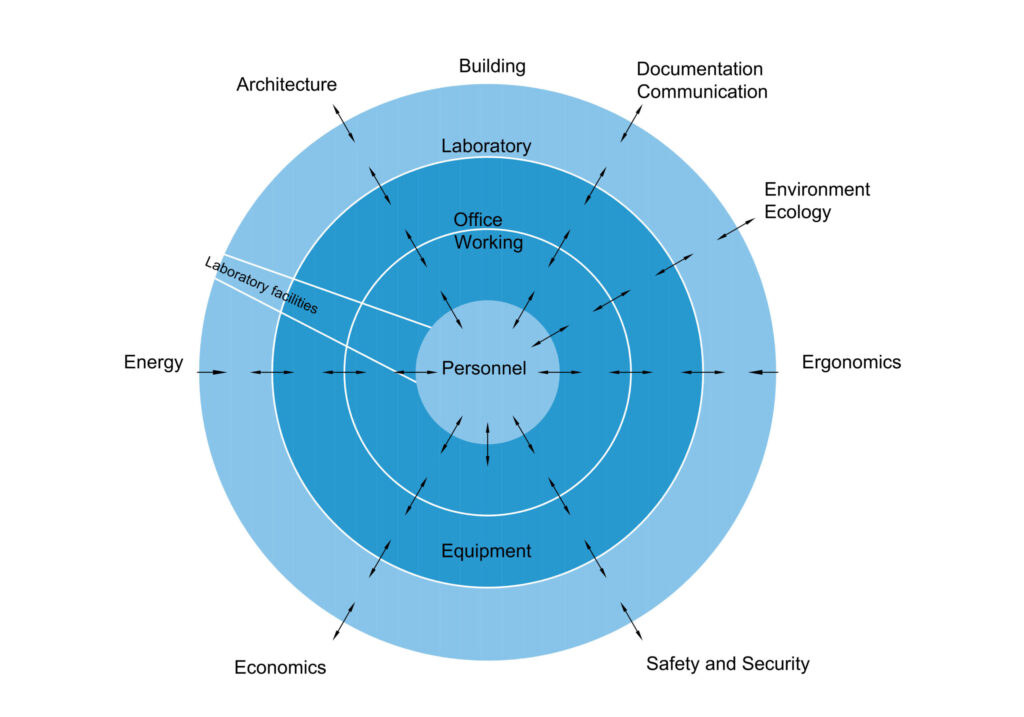Laboratory facilities according to WHO and arc2lab
In a world where scientific innovation is the driving force of progress, laboratory design and equipment have become essential elements for ensuring the efficiency and safety of research projects. arc2lab has the following diagram, which visually illustrates the complex network of elements necessary to build modern and adaptable facilities.
The diagram presents a concentric structure in which each ring represents a level of importance and specificity in laboratory planning. At the core is the “Staff” factor, an element without which no research structure can operate effectively. This core emphasizes the importance of having trained professionals capable of transforming infrastructure into spaces for creativity and discovery.
Surrounding the staff are key sections such as “Office Working” and “Equipment,” which represent the dynamics of internal communication and the technical execution of scientific processes. An incision can be seen between all the rings, called “Laboratory Facilities,” encompassing the material infrastructure and essential resources that allow experiments and research to be carried out with high-quality standards.

What truly distinguishes this diagram is the way it integrates into its outer ring a series of factors that transcend the mere physical construction of the laboratory. Aspects such as architecture, construction, documentation, communication, ecological environment, ergonomics, safety and security, economics, equipment, and energy are arranged in a spectrum that highlights their interrelationship and essential condition for the overall success of the project.
Each of these elements complements each other:
- Architecture and construction: They not only define the physical appearance and structure, but also influence thermal and lighting efficiency, as well as resource utilization.
- Documentation and communication: They form the backbone for the transmission of knowledge and protocols inside and outside the laboratory.
- Ecological environment and ergonomics: They focus on staff well-being and minimizing environmental impact, optimizing human-machine interaction and promoting sustainable practices.
- Safety, economy, equipment, and energy: These guarantee the technical and financial viability of the laboratory, ensuring that the facilities comply with regulations and are profitable in the long term.
This layered distribution demonstrates that a laboratory of excellence is the result of the confluence of various disciplines, in which every aspect must be meticulously planned to operate in harmony.

At arc2lab, we believe that visualizing these interrelated components is crucial for decision-making during the construction and equipment phase. This diagram serves as a guide for identifying critical points in the design, allowing us to anticipate challenges and optimize resources. Adopting a systemic approach promotes not only operational efficiency but also the ability to respond to unforeseen challenges, which is essential in the dynamic environment of modern research.
The adoption of this planning model demonstrates the commitment of institutions and decision-makers to creating spaces that foster scientific development, ensuring safe, efficient, and environmentally friendly working conditions.
